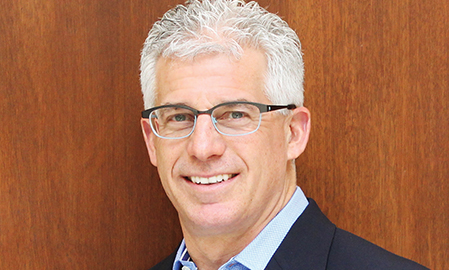Physicians Desk Reference wants to be thought of as more than just that heavy book doctors paw through for information—and is on a mission to change this perception. PDR has been doing this by offering services that go beyond the book, as well as putting more cosmetic switch-ups into place such as launching a new corporate website last year.
“If you were to shut your eyes and think of PDR you would envision a big book. Almost a big Webster’s dictionary that has all the labels in it. And that’s how the marketplace probably envisions us now. We’re a lot more,” President and CEO Richard Altus tells MM&M.
Altus says the company is in the midst of what he calls “a pivot towards a broader market” through tools and extensions that can integrate PDR‘s expertise and value into a healthcare provider’s daily workflow. This transformation includes flowing content into electronic health records, websites, email, mobile and mobile platforms, or as Altus says, “where the doctor wants to be reached 24 by 7.”
While Altus notes the changeover officially started when Lee Equity Partners acquired the company in 2009, SVP of Corporate Development and EHR Vendor Relations Andrew Gelman says the push to transform has “really been the focus of the last two years.”
Gelman says this push included recognizing that by helping physicians get relevant content, PDR could also allow the pharmaceutical industry and others “to reach those doctors at the right time, at the right place with the right message.” Among the facts PDR execs keep on hand when talking about trusted content is a study finding “100% brand recognition… we’ve got some great research on that,” he says. The company says it is serious about the idea of trusted content and has refused content to protect the PDR brand.
As Altus and Gelman explain, the EHR platform is of particular importance because PDR serves two purposes: first, it wraps content that flows into electronic health records in the recognized PDR brand, and second, it gives pharmaceutical companies the contact with doctors that they want, bypassing the need to pitch EHR vendors individually.
“EHRs are not at all interested in working with a brand team,” Gelman adds.
At the same time, this means PDR is courting vendors through a process Gelman describes as “a brute force attack. It’s not really a number of sales people. It’s really me and one person” showing up at EHR conferences and “doing everything we can to make that partnership sale.”
The types of providers pharma marketers can reach depends on the particular EHR network, but Altus says brand interest is not higher for one therapeutic class over another, and that the EHR will continue to become a critical touchpoint as “doctors become employees and employers don’t let reps in. This is a screen that pharma needs to be on.”
Gelman underscores the EHR platform’s importance, saying that between 70% and 80% of doctors are using “some form of EHR technology,” and end up looking at this “five to seven hours a day—that’s the screen you’re looking at.” PDR’s reach currently includes 65,000 active EHR prescribers, a number Gelman expects will hit 130,000 by the end of the year.
The company is also continuing to reach physicians through print, ebooks and prescription drug labels. CFO Gary Lubin says PDR updates its label in real time and updates are pushed to all platforms simultaneously. The company says its cumulative reach across all platforms amounts to 6 million touchpoints, a number it expects will hit 12 million by the end of the year.
“We have a very good sense of these doctors. When and where they want to get information, what kind of information they want to get in different places… it is about optimizing and coordinating and providing business intelligence about what we’re doing,” Gelman says.








